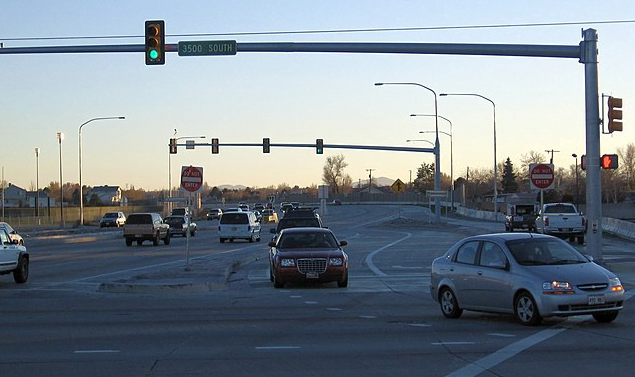Introduction to the Virginia Times Continuous Flow Intersection (CFI)
Welcome to the world of traffic management innovation, where efficiency meets safety. If you’ve ever found yourself waiting in a long line at an intersection, you know how frustrating it can be. Enter the Virginia Times Continuous Flow Intersection (CFI) 2014—a groundbreaking solution designed to keep vehicles moving smoothly while reducing congestion. This unique design not only enhances traffic flow but also aims to improve overall road safety for drivers and pedestrians alike.
Curious about how this intriguing intersection works? Or perhaps you’re wondering what makes it stand out from traditional designs? Let’s dive into the history, benefits, and insider tips on navigating this fascinating feature that is reshaping our driving experiences across Virginia.
History and Purpose of CFIs
The Virginia Times Continuous Flow Intersection (CFI) represents a revolutionary approach to traffic management. First developed in the 1990s, CFIs were designed to address congestion at busy intersections.
They allow left-turning vehicles to move across oncoming traffic lanes before reaching the intersection. This unique design minimizes delays and boosts efficiency for all road users.
The main purpose of implementing CFIs is to enhance safety while improving vehicle flow. They reduce the risk of collisions by separating opposing movements more effectively than traditional layouts.
Virginia embraced this innovative concept in 2014, seeking solutions for increasing commuter demands. The CFI proves that smart engineering can lead to safer roads and smoother rides for everyone involved in daily travel.
Benefits of CFIs for Drivers
The Virginia Times Continuous Flow Intersection (CFI) brings several advantages to drivers. One of the most significant benefits is improved traffic flow. By allowing vehicles to turn left before reaching the intersection, CFIs reduce delays and minimize stop times.
Safety is another key advantage. With reduced conflict points, there’s a lower chance of high-speed collisions. Drivers can navigate through intersections with greater confidence, knowing that their path is clearer.
Additionally, CFIs contribute to fewer idling vehicles. This leads not only to reduced emissions but also saves fuel for commuters. Shorter wait times mean less frustration as well.
For those who frequently drive in busy areas, transitioning from traditional intersections can be refreshing. The streamlined design fosters efficiency while enhancing overall mobility on Virginia roads. Adjusting may take time, but the long-term benefits are clear for everyday drivers navigating these innovative structures.
Tips for Navigating the CFI
Navigating the Virginia Times Continuous Flow Intersection can feel daunting at first. However, with a few simple tips, you’ll find it easier to maneuver through this innovative design.
Always approach the intersection with caution. Look for signage indicating when to yield or stop. These signs are crucial in guiding you safely through.
Stay aware of pedestrians and cyclists. They often have designated lanes that may cross your path unexpectedly.
Pay attention to lane markings. CFIs utilize specific lines for left-turning traffic, which helps streamline flow and reduce congestion.
Keep pace with other vehicles; maintaining a consistent speed is key in these intersections. If everyone stays on track, delays can be minimized significantly.
Practice makes perfect. The more familiar you become with the CFI layout, the smoother your experience will be each time you drive through it.
Common Misconceptions about CFIs
Many people hold misconceptions about the Virginia Times Continuous Flow Intersection (CFI). One common myth is that CFIs are complicated and difficult to navigate. However, once drivers become familiar with their layout, they often find them more intuitive than traditional intersections.
Another misconception is that CFIs cause increased congestion. In reality, these innovative designs alleviate traffic bottlenecks by allowing vehicles to make turns without stopping on main lanes. This can lead to smoother flow during peak hours.
Some believe CFIs only benefit cars, ignoring their advantages for pedestrians and cyclists. The design prioritizes safety for all users by providing dedicated crossings and improved visibility.
There’s a notion that these intersections are experimental and untested. On the contrary, numerous studies indicate their effectiveness in reducing accidents and improving traffic efficiency across various locations.
Other Innovative Traffic Solutions in Virginia
Virginia leads the way in innovative traffic solutions. Beyond the Virginia Times Continuous Flow Intersection 2014, several other projects are making waves.
Roundabouts have gained popularity across the state. They enhance safety and reduce congestion by allowing continuous flow of vehicles. Drivers often find them less stressful compared to traditional intersections.
Smart traffic signals are another game-changer. These systems adapt in real-time based on traffic conditions, improving efficiency and reducing wait times at lights.
Carpool lanes also encourage shared rides, minimizing single-occupancy vehicles on busy highways. This not only eases congestion but promotes eco-friendly commuting habits.
Pedestrian-focused designs like raised crosswalks ensure safer passage for foot traffic while maintaining vehicle flow. Each solution reflects Virginia’s commitment to modernizing its roadways for everyone’s benefit.
Conclusion
The Virginia Times Continuous Flow Intersection (CFI) is a groundbreaking innovation that has reshaped traffic management in the state. Understanding its design and benefits can significantly improve your driving experience. As you navigate this unique intersection, remember the tips shared to enhance safety and efficiency.
Many drivers still hold misconceptions about CFIs, often fearing they are complex or chaotic. However, with practice and awareness, these intersections can become second nature. The advantages of CFIs—such as reduced wait times and improved traffic flow—make them an invaluable addition to Virginia’s roadways.
Virginia continues to embrace innovative solutions for better transportation systems. The CFI is just one example of how technology and thoughtful planning can transform our daily commutes.
Exploring these advancements not only enhances your knowledge but also prepares you for smoother journeys ahead on Virginia’s roads. It’s time to embrace the future of driving while enjoying the benefits that come with it!
